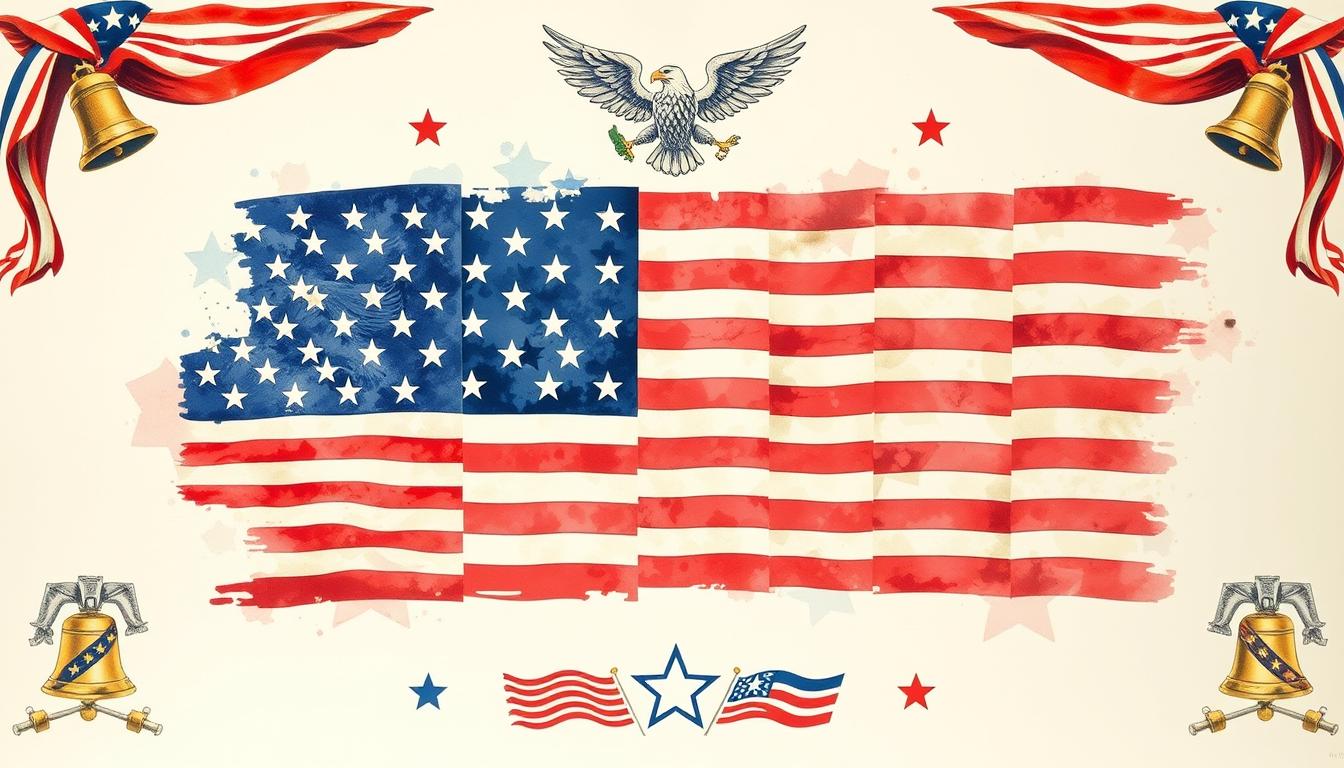The Evolution of Old Glory: Key Milestones in the History of the American Flag

Old Glory, a term that resonates with pride and respect, is more than just a piece of fabric. It symbolizes the vast American Flag history, embodying the spirit of unity and perseverance across generations. This exploration of the evolution of the flag will delve into the key milestones of the American Flag, from its inception to the present day. We'll examine how the design and cultural significance of the flag have transformed, becoming a revered emblem of national identity and heritage, especially during pivotal moments in U.S. history.
As we navigate through the fascinating journey of Old Glory, we will uncover layers of meaning that connect each star and stripe to the values they represent, celebrating over two centuries of American pride.
The Origins of the American Flag
The origin of the American Flag is a fascinating story rooted in the history of the nation. In 1777, the newly formed United States faced the challenge of creating a unifying symbol that represented its burgeoning identity. The Flag Act of 1777 played a pivotal role in this process by establishing a standard design for the flag, which would encompass the values and aspirations of the American people.
The Flag Act of 1777
The Flag Act of 1777 is a crucial milestone in the history of the American Flag. This act defined the flag’s design, mandating thirteen alternating red and white stripes to represent the thirteen original colonies. The inclusion of stars, intended to symbolize a new beginning and the unity of the states, marked a significant moment in American history. With this act, the flag began to form its identity, setting the stage for the enduring emblem of freedom it would become.
The Symbolism of the Stars and Stripes
The symbolism of the flag goes beyond its physical appearance. Each color within the Stars and Stripes carries deep meanings: red represents valor and bravery, white stands for purity and innocence, while blue signifies vigilance, perseverance, and justice. Together, these elements reflect the spirit of the nation and its commitment to the values that underlie its foundation. The Stars and Stripes continues to serve as a powerful emblem, inspiring patriotism and unity among Americans.

| Color | Meaning |
|---|---|
| Red | Valor and bravery |
| White | Purity and innocence |
| Blue | Vigilance, perseverance, justice |
Key Changes in Flag Design
The design of the American flag has experienced significant transformations throughout its history, reflecting the nation's growth and unity. As new states joined the Union, the incorporation of stars became essential in the narrative of the American flag, symbolizing states’ recognition and their unity under one banner. Each alteration tells a unique story about the evolving identity of a nation.
The Addition of Stars and Stripes
Initially, the American flag featured 13 stripes, representing the original colonies. As the nation expanded, each new state was represented by an additional star. This process of adding stars exemplifies the dynamic nature of the flag, as it adapted to represent a growing country. The history of stars in the flag is not merely about aesthetics; it embodies the spirit of American unity and diversity.
Significant Modifications Over the Years
Throughout its existence, the American flag has undergone various changes. Starting from the 15-star flag adopted in 1795, the design continued to evolve as more states entered the Union. The collection of colors and shapes has been a constant source of fascination, with each version marking a distinct period in American history. The most recent design features 50 stars, reflecting the total number of states today.
The Flag Resolution of 1818
A pivotal moment in the changes in American Flag design came with the Flag Resolution 1818. This legislation established the principle that the number of stars would correspond with the number of states, while the 13 stripes would remain constant. This resolution solidified the flag's design, ensuring its continued applicability as the nation expanded. The simplicity of this guideline has allowed the American flag to remain a recognizable and enduring symbol of the United States.

| Flag Version | Number of Stars | Stripes | Year Adopted |
|---|---|---|---|
| 15-Star Flag | 15 | 13 | 1795 |
| 20-Star Flag | 20 | 13 | 1818 |
| 48-Star Flag | 48 | 13 | 1912 |
| 50-Star Flag | 50 | 13 | 1960 |
The Evolution of Old Glory: Key Milestones in the History of the American Flag
The American flag has endured as a symbol of unity and patriotism throughout its history. Key moments in American history often reflect the deep-rooted historical significance of the flag, particularly during periods of conflict. The War of 1812 marked a pivotal time for the American flag, as it served not only as a symbol of the nation but also as an emblem of resilience.
The Star Spangled Banner and Its Impact
Francis Scott Key's inspiration for "The Star Spangled Banner" came while witnessing the American flag bravely flying after the bombardment of Fort McHenry. This moment captured the essence of the American spirit, solidifying the flag's role in representing hope and defiance against adversity. The lyrics echo a profound emotional connection to the flag, evoking pride and loyalty among citizens. The legacy of the Star Spangled Banner as the national anthem continually reinforces the importance of the flag in American culture.
Flags of War: The Civil War and Beyond
During the American Civil War, the flag evolved in meaning and design as different factions adopted unique banners. The American flag during the Civil War became a defining element for both the Union and the Confederacy. Each side saw their flag as a representation of their beliefs and goals, leading to divisions as well as a shared passion for their respective ideals. The historical significance of the flag transcended mere fabric; it symbolized not just identity but the very principles of freedom and governance. Post-war, public perception of the flag shifted as it came to embody reconciliation and a unified nation, leading to enduring traditions celebrated to this day.
Legislation and Flag Etiquette
The treatment and display of the American flag are governed by established guidelines, shaping our understanding of proper flag etiquette. The American Flag Code of 1923 provides a comprehensive framework that outlines how citizens should respect and honor the flag. This code serves not only as a legal reference but also as a cultural touchstone, echoing the values embodied in the symbols of the nation.
The Flag Code of 1923
Enacted to standardize the treatment of the American flag, the Flag Code of 1923 details how the flag should be displayed, cared for, and disposed of. It emphasizes that the flag should always be treated with respect, reflecting the values of democracy and freedom it represents. Key points in the code include:
- The flag should never touch the ground.
- It must be flown at half-mast in times of national mourning.
- The flag should be illuminated when displayed at night.
Modern Flag Etiquette and Symbolism
Today's flag etiquette builds on the foundation laid by the American Flag Code while incorporating evolving cultural perspectives. As modern flag laws reflect contemporary values, discussions around flag display and treatment have gained prominence. Respecting the flag remains central to national identity, promoting engagement in rituals such as:
- Flag raising and lowering ceremonies.
- National holidays like Flag Day and Independence Day.
- Events that memorialize historical moments in American history.
Understanding and practicing flag etiquette today signifies a commitment to the ideals of the nation. Elevating this awareness fosters a deeper appreciation for the symbols that unite citizens and honors the legacies of those who have served under the American flag.
The American Flag in Popular Culture
The American flag has become a ubiquitous symbol in pop culture, representing both national pride and profound artistic expression. As it weaves through various forms of media, from film to music, the flag often stands as a backdrop that resonates with the emotions of the times. Its representation highlights the diverse perspectives within society, making it a powerful icon that reflects changing values and sentiments.
In the realm of advertising, the American flag is employed as a potent symbol that instantly evokes feelings of patriotism. Brands have utilized the flag to connect with consumers on a deeper level, tapping into a shared sense of identity. Likewise, in music, artists have used the flag as both a canvas for personal expression and as a means to comment on social issues, turning the American flag into a rallying cry for movements advocating for change and equity.
Moreover, the presence of the American flag in flags in art transcends mere decoration; it serves as a narrative device that adds layers of meaning to artworks, reflecting historical contexts and cultural conversations. By examining iconic films, literature, and visual art, it is clear that the symbolism of the American flag in pop culture extends beyond its traditional boundaries, securing its legacy as an enduring cultural icon that resonates with the hearts of citizens today.
